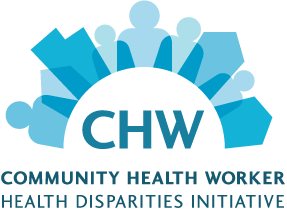Guatemala
“The promotores participated a great deal in the planning of this work, and the idea for self-training emerged. The CHWs formed teams of 3. They had the responsibility to prepare the material and conduct the sessions as they were being trained.” —Guatemala Field Coordinator/Trainer

In Mixco, Guatemala, the project was implemented under the name Programa Corazón Sano y Feliz. The project was implemented by the Guatemalan Association for the Prevention of Heart Diseases (APRECOR) in collaboration with the Comprehensive Center for the Prevention of Chronic Diseases of the Institute of Nutrition of Central America and Panama (INCAP) and the Chronic Diseases Program of the Ministry of Health of Guatemala.
In Guatemala, two strategies were implemented — one to train the community health workers (CHWs), or promotores (Strategy 1, train-the-trainer), and then one to allow the trained CHWs in turn to educate patients at a community clinic in partnership with clinic staff who were providing clinical management (Strategy 3, lifestyle and clinical management). Ten 2-hour weekly training sessions were conducted for 21 CHWs participating in Strategy 1, and six education sessions were conducted for 79 patients who took part in Strategy 3.
Results
The data from Guatemala indicate that participants’ overall knowledge scores significantly improved after implementation of Strategy 1. The frequency of practice of heart healthy food-related behaviors increased significantly as well. After Strategy 3 was implemented, several clinical outcomes for participants in the lifestyle and clinical management strategy (i.e., blood pressure and overall CVD risk level) significantly improved.
- CHWs (N=21) increased their heart health knowledge by 14 percentage points and increased intent to adopt heart health behaviors by 15 percentage points.
- The Ministry of Health will incorporate the CHW model into selected primary care practices.
- Among the 79 participants in Strategy 3, there was a 50-percent decrease in hypertension, and the share of participants at very high risk for cardiovascular disease declined from 16 percent to 1 percent.

| Blood Pressure | Percent, Time 1 | Percent, Time 2 | Percent, Time 3 |
|---|---|---|---|
| Hypertension, Stage 1 | 66 | 19 | 9 |
| Hypertension, Stage 2 | 34 | 32 | 41 |
| Prehypertension | 0 | 41 | 49 |
| Normal | 0 | 8 | 1 |

| Blood Pressure | Percent, Time 1 | Percent, Time 2 | Percent, Time 3 |
|---|---|---|---|
| Very High | 16 | 1 | 1 |
| High | 15 | 6 | 3 |
| Medium | 29 | 29 | 23 |
| Low | 39 | 63 | 73 |
The World Health Organization (WHO) cardiovascular risk prediction chart was used to assess participants’ cardiovascular disease (CVD) risk. They used four levels to categorize risk, ranging from 1=low to 4=very high. The WHO risk prediction chart is a tool to predict 10-year risk of fatal or non-fatal CVD event according to age, BP, smoking status, total blood cholesterol, and diabetes.1
1 World Health Organization. (2007). WHO/ISH cardiovascular risk prediction charts.
Last Updated: Juneh 2014






